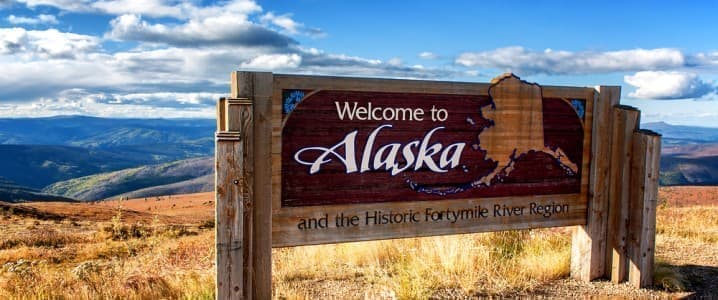Since coming into office, United States President Donald Trump has doubled down on his “Drill, baby, drill” statement by opening federal land for licensing and encouraging oil and gas companies to increase production. One state Trump has set his sights on is Alaska, an area where oil operations have become increasingly more controversial in recent years due to concerns over environmental degradation.
President Trump hopes to double the quantity of crude moving through Alaska’s pipelines, as well as construct a giant gas project, U.S. Energy Secretary Chris Wright said during a tour of Prudhoe Bay oilfield in June. “Let’s double oil production, build the big, beautiful twin, and we will help energise the world and we will strengthen our country and strengthen our families,” stated Wright.
That same month, the Department of the Interior announced plans to repeal Biden-era restrictions on the licensing and development of the National Petroleum Reserve-Alaska, which was designated as a protected wildlife reserve. The agency argued that the Biden-era rule was inconsistent with the 1976 Naval Petroleum Reserves Production Act, which allowed for oil and gas leasing in the area.
“Congress was clear: the National Petroleum Reserve in Alaska was set aside to support America’s energy security through responsible development,” Interior Secretary Doug Burgum said in a statement. “The 2024 rule ignored that mandate, prioritising obstruction over production and undermining our ability to harness domestic resources at a time when American energy independence has never been more critical.”
Following the initial announcement, the public was given the opportunity to comment, during which time around 250,000 people responded. However, in July, the Interior Department confirmed it would be revoking three documents that had been aimed at limiting drilling in the reserve, marking a win for President Trump, who has fought for the last seven months to encourage more drilling.
President Biden introduced the restrictions during his time in office to prioritise traditional Indigenous uses, as well as protect habitats for polar bears, caribou, and other wildlife, across around 3 million acres of the 23-million-acre reserve. Around half of the reserve had previously been restricted from oil development under the Biden and Obama administrations. However, the Trump administration now plans to open 82 percent of the reserve to gas and oil drilling.
The question of more drilling in Alaska is a complex one, as environmentalists and Indigenous communities are extremely concerned about the potential impact of the move on environmental and human health. However, the oil and gas industry has provided much of the state’s revenue for decades and could provide an economic boost for several years to come.
Alaska’s North Slope contains six of the 100 largest oil fields in the United States and one of the 100 largest natural gas fields, according to the U.S. Energy Information Agency. Alaska does not have a state sales tax or a personal income tax, as revenues from Alaska’s oil and gas industry fund about half of the state government. In addition, since 1982, every eligible Alaskan resident has received an annual dividend based on the value of oil royalty revenue in the Alaska Permanent Fund. This has made oil operations extremely popular among much of Alaskan society.
Nevertheless, developing any new oil operations could cause irreparable damage to the environment and jeopardise the chances of achieving a global green transition. As part of its 2050 net-zero carbon emissions pathway, the International Energy Agency warned that no new oil and gas fields can be approved for development if the world hopes to achieve its climate aims. New oil and gas development threatens Arctic wildlife, undermines the rights of Alaska Natives, and puts one of the fastest-warming ecosystems on Earth at risk, according to opponents to the new move.
In 2023, the Biden administration approved the controversial Willow project, which is still under construction and is expected to come online in 2029. It could then be operational for over 30 years. This provides an idea of just how long an impact a new oil project has on the environment.
Andy Moderow, the senior director of policy at the Alaska Wilderness League, explained, “We’re not talking about oil next year. We’re talking about oil in 2050 and 2060 and beyond, when we need to move past it.” The projects “could easily be pumping oil when babies born today are retiring in a climate that’s not livable if that oil is not blocked”.
While new fossil fuel projects could boost Alaska’s revenue, the state already has a strong oil fund that benefits its residents. Meanwhile, developing new projects could put the lives of native communities and wildlife at risk. While many governments around the world are discussing the most effective ways to transition to green, the removal of environmental restrictions in one of the world’s most vulnerable ecosystems seems at odds with international aims for climate progress.
By Felicity Bradstock for Oilprice.com
More Top Reads From Oilprice.com
